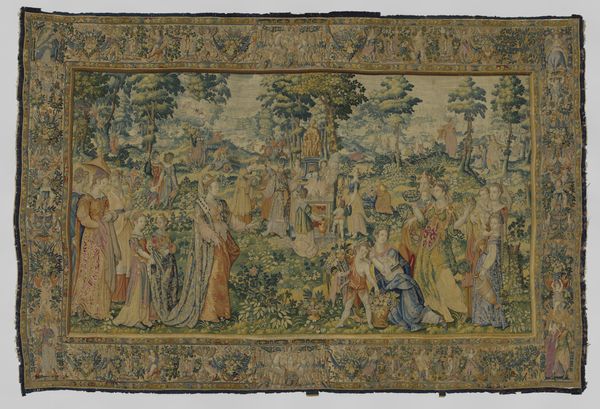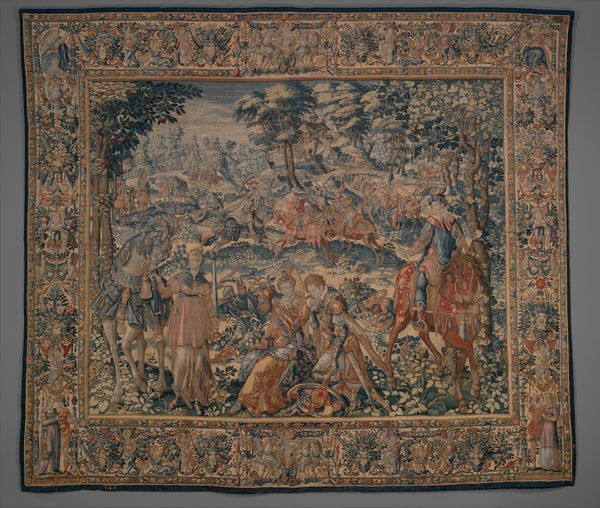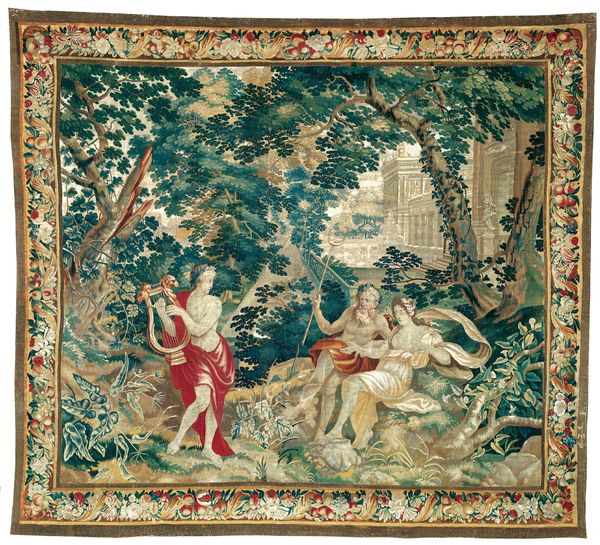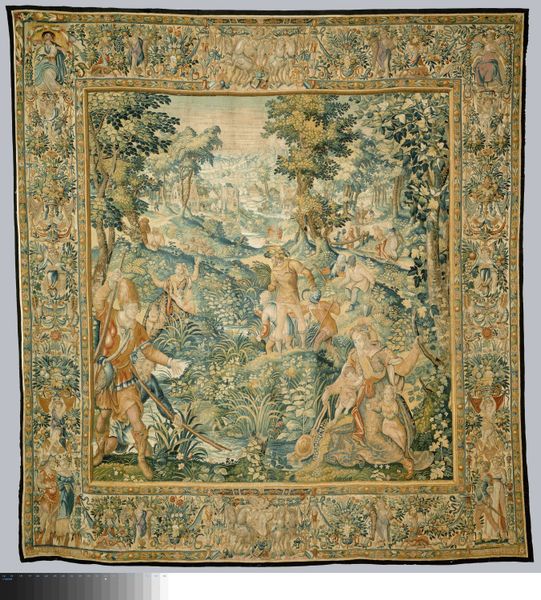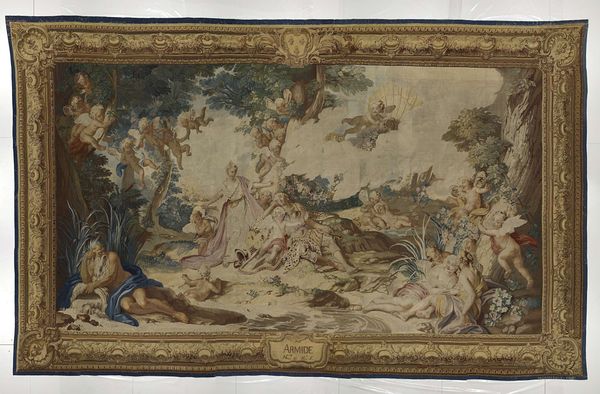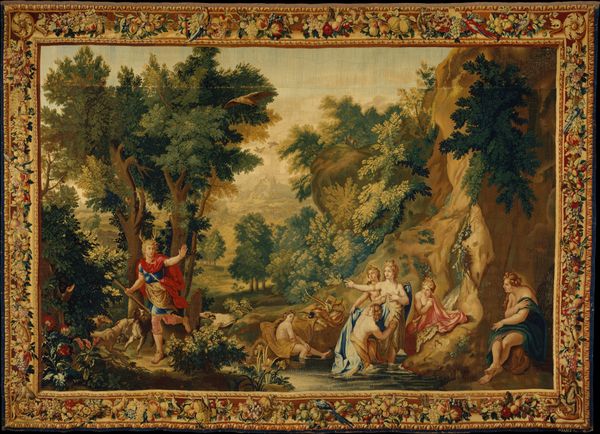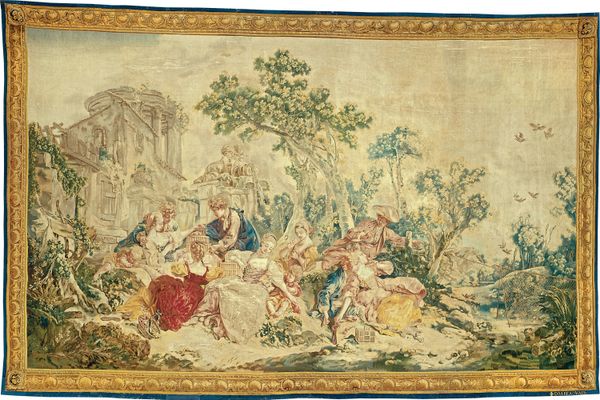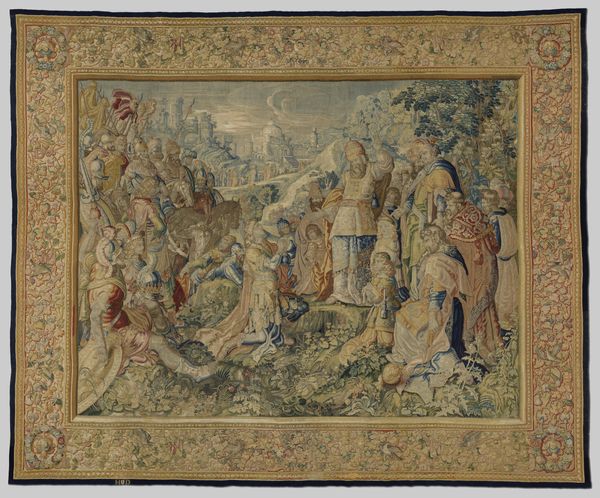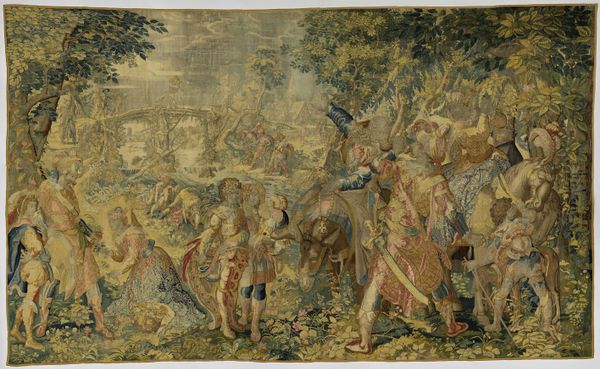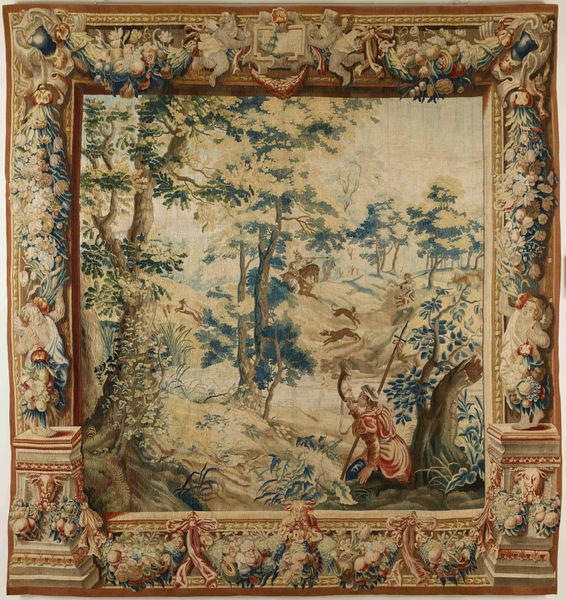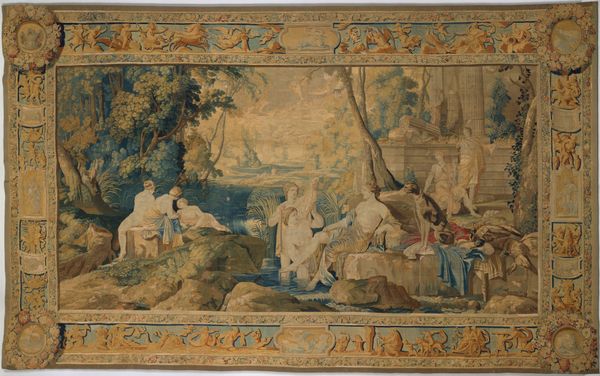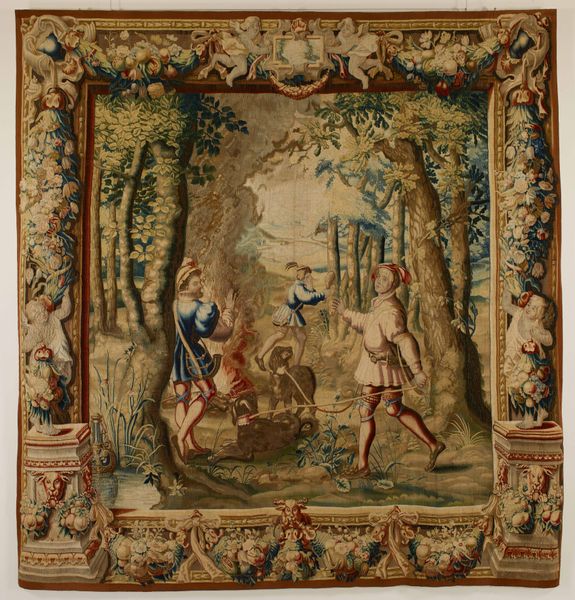
weaving, textile
#
narrative-art
#
baroque
#
weaving
#
landscape
#
textile
#
figuration
#
oil painting
#
history-painting
Dimensions: height 354 cm, height 351 cm, width 546 cm, width 542 cm
Copyright: Rijks Museum: Open Domain
François Spiering created this tapestry of Cephalus and Procris, sometime in the late 16th or early 17th century, using wool and silk. As a visual medium, tapestries served as both decoration and insulation for elite residences. This piece depicts a scene from Ovid's Metamorphoses, a popular source for artists during the Renaissance. It presents the tragic tale of Cephalus and Procris, whose love is destroyed by jealousy. Made in the southern Netherlands, this tapestry reflects the region’s economic prosperity at the time. The intricate design and use of expensive materials, like silk, would have signaled the wealth and status of the patron who commissioned it. But beyond decoration, tapestries like these also functioned to educate and provide moral lessons for their owners and their guests. Analyzing tapestries like this involves archival research and a close examination of artistic influences. Such art objects connect us to the economic, social, and cultural contexts of the past.
Comments
rijksmuseum about 2 years ago
⋮
To test the faithfulness of his wife Procris, Cephalus disguised himself and tried to seduce her. Just when she was about to give in, he revealed himself. In her distress, Procris fled to the goddess Diana, but was eventually reconciled with her husband. In the foreground, Diana and Procris bid each other farewell.
Join the conversation
Join millions of artists and users on Artera today and experience the ultimate creative platform.
